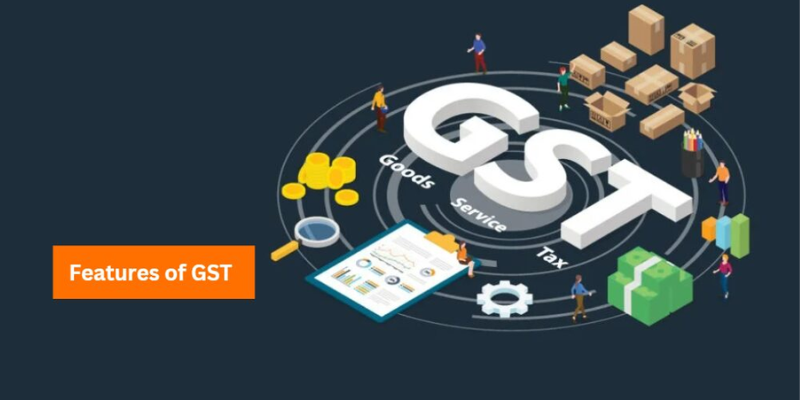GST, or Goods and Services Tax, has significantly transformed the taxation landscape in India since its implementation. It is a comprehensive, multi-stage, destination-based tax that has unified the country’s indirect taxation system. Understanding the key features of GST is essential for businesses, professionals, and individuals. In this blog, we will explore the primary features of GST and how they impact various stakeholders. If you want to master GST concepts and implementation, consider enrolling in a GST Course in Chennai to gain in-depth knowledge and practical skills.
1. Comprehensive Tax Structure
GST replaces multiple indirect taxes such as VAT, Service Tax, Excise Duty, and others, creating a unified tax structure. This consolidation has reduced the cascading effect of taxes, ensuring a smoother flow of goods and services across the country. By eliminating multiple layers of taxation, GST has simplified the tax structure and made it more transparent.
2. Input Tax Credit (ITC)
One of the most significant features of GST is the Input Tax Credit mechanism. ITC allows businesses to claim credit for the taxes paid on inputs, which can be offset against the output tax liability. This not only prevents double taxation but also promotes transparency in the tax system. Proper understanding of ITC is crucial for accurate GST compliance, and professionals can enhance their skills through Tally Training in Chennai, which provides practical knowledge of GST calculations and ITC management.
3. Taxation on the Basis of Destination
GST is a destination-based tax, meaning that the tax is levied at the point of consumption rather than the point of origin. This is a significant shift from the earlier taxation system, where goods were taxed at multiple stages of production. The destination-based nature of GST ensures that the revenue is accrued to the state where the goods or services are consumed, leading to fair tax distribution among states.
4. Dual GST Structure
India follows a dual GST model, comprising Central GST (CGST) and State GST (SGST) for intra-state transactions and Integrated GST (IGST) for inter-state transactions. This structure helps in maintaining a clear distinction between state and central taxation, ensuring seamless tax administration.
5. E-Way Bill System
The e-way bill system is a digital mechanism under GST that monitors the movement of goods worth over a specified limit. This system ensures transparency in the transportation of goods and helps in preventing tax evasion. The e-way bill is generated electronically, containing essential information such as the value of goods, GSTIN of the supplier and recipient, and the vehicle number, and it applies across the different types of GST.
6. Online Compliance and Returns
GST has digitized the entire tax filing process, making it more efficient and accessible. Taxpayers must file monthly, quarterly, and annual returns online through the GST portal. The online system reduces paperwork and speeds up the compliance process.
7. Composition Scheme for Small Businesses
To ease the tax burden on small businesses, GST has introduced the Composition Scheme. Businesses with a turnover of up to a specified limit can opt for this scheme and pay tax at a reduced rate. This scheme simplifies tax filing and compliance for small enterprises, encouraging them to register under GST without facing financial strain.
8. Anti-Profiteering Clause
The anti-profiteering provision under GST ensures that businesses pass on the benefits of reduced tax rates to consumers. This prevents unethical pricing practices and promotes fairness in the market. Businesses must maintain proper records to demonstrate that the benefit of input tax credits and reduced tax rates has been passed on to consumers, while also being aware of the different GST Payment Methods available for compliance.
9. Harmonized System of Nomenclature (HSN) Codes
GST uses HSN codes for the classification of goods and services, aligning Indian tax practices with global standards. HSN codes facilitate accurate tax calculation, reduce errors, and simplify filing returns. Businesses dealing with multiple products must be well-versed in HSN codes to ensure correct tax computation and avoid penalties.
10. Reverse Charge Mechanism
Under GST, the Reverse Charge Mechanism (RCM) shifts the tax liability from the supplier to the recipient in specific cases. This feature applies to transactions involving unregistered suppliers, certain goods and services, and imports. Understanding RCM is vital for accurate GST filing and maintaining tax compliance.
GST has brought significant changes to the Indian taxation system, making it more efficient, transparent, and business-friendly. From the elimination of cascading taxes to the introduction of the Input Tax Credit and e-way bill system, the features of GST have streamlined the tax process and reduced tax evasion. If you want to excel in managing GST compliance, consider enrolling in a Training Institute in Chennai that offers comprehensive GST courses. Acquiring hands-on expertise will help you navigate the complexities of GST effectively and keep your business tax-compliant.

